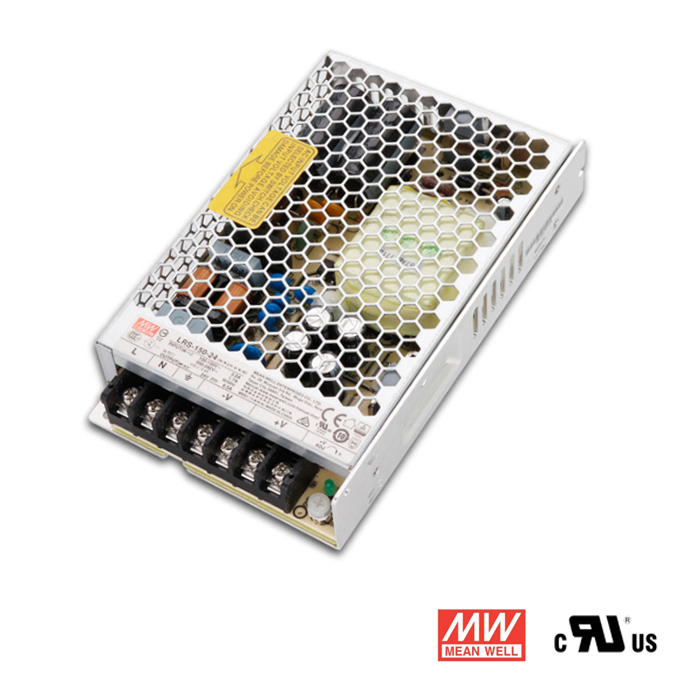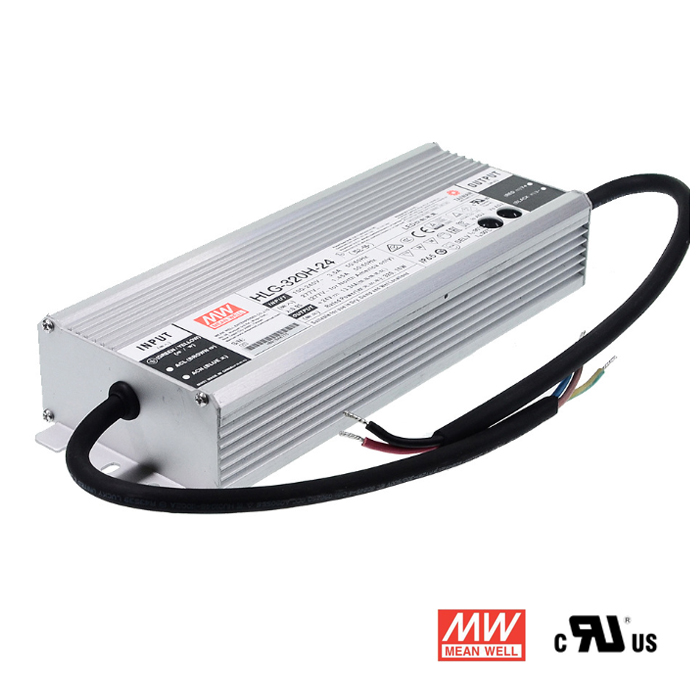24V LED Power SuppliesWhy choose 24V power supply? Advantages of using 24V power supplies24V LED strip lights require low voltage 24V DC LED power supply, which is also called LED driver, or LED transformer. There are many factors in the selection of LED strip light power supply, such as input voltage, output voltage, power capacity, waterproof level, etc. For details, please see the article: How to choose LED strip light power supply. 24V DC Power Supplies are better for large scale LED strip installationBased on the fact that 24V LED strip lights have less voltage drop than 12V LED strips, it is better, when possible, to choose 24V LED strips for large scale or long run installation. So 24V power supplies are necessary for installing the 24V LED strips. With 24V DC power supplies, the 24V circuit requires less power feed points than 12V circuit that uses power supplies. Also 24V circuits will have less stress on the conductors, because it uses only half amount of currents in 12V circuits. Please see below for more detailed information.
Recommended Reading:
General considerations for 24V LED power supplyThe AC power supplied for household and commercial buildings in the USA is primarily 120Vac. Typically, the input voltage of LED power supplies covers 120 - 240Vac, so it is applicable. However, some commercial buildings provide an input voltage of 277Vac. At this time, a wide voltage power supply needs to be selected, such as the Mean Well HLG series. For economical LED power supplies, consider the Mean Well LRS series. 24V Waterproof LED Power SupplyIf the installation environment of the power supply is humid, you need to choose a waterproof power supply. The waterproof power supply case can protect the power supply components from moisture and dust. 24V Power Supply for Long Run LED Strip InstallationFor larger project of LED light strip installation, it is preferred to use 24V LED strip because the voltage drop is smaller than 12V version LED strip. In this way, the power needs to choose 24V. Advantages of 24V LED power supplyWhat are the advantages of driving an LED strip with a 24 volt power supply over a 12 volt power supply? At 24V, the LED strip light only has half the current of the 12V strip light. Take for example an RGB LED strip with 12 watts per meter. At 12W/m, the current of the light strip is 1 amp at 12 volts, while at 24v, it is only 0.5 amps. The lower current does not place too much stress on the conductor, and causes less loss during transmission. These advantages of 24V LED strips are only offset by the disadvantages of having a longer cutting unit. Therefore, if possible, it is recommended using 24V LED strips for longer run installation. Why 24V power is particularly suitable for RGBW LED strip lightsWhen buying an RGBW LED strip, if you want to find a 12V version, it is almost impossible to find it. The RGB light strip is easy to find 12V version. So, why do RGBW strips need 24V power to drive? Let's take a look at the RGB LED strip light first. For RGB, the current is divided into 3 channels at the negative electrode, and all channels are combined at the positive electrode. Therefore, if each channel is 2A, then the 3 channels are 6A in total, and this 6A loads on a wire at the positive electrode. This is barely okay for one wire. Then, let's take a look at RGBW strip light. For example, under the 12V voltage, 19.2 W/m, a 5m long strip light is 96w. Then its 8 amps pass through the 4 negative wires, and then merge into a positive wire. The 8A current is too large a load for a normal positive wire, unless a very thick wire is used. Considering that there are 5 parallel wires for RGBW strip light, if a very thick wire is used, then 5 parallel wires are very inconvenient for FPC board welding. If it is driven by 24V, then the total current is only 4 amps, so that it does not need to be particularly thick for the positive wire, so that 5 parallel wires are feasible for welding. Therefore, the RGBW LED strip is generally driven by a 24V voltage. When selecting a power source, a 24V power source is selected. Difference of LED power supply, LED driver, and LED transformerLED power sources that provide a constant current output have typically been referred to as LED drivers. In the past, AC-DC power supplies that provided a regulated constant voltage to LEDs were referred to as LED power supplies. Today, the terms LED driver and LED power supply are used interchangeably. In the application of LED strip lights, the LED driver and power supply are essentially low voltage transformers that convert high voltage power to low voltage. Therefore, we consider LED strip light transformer, LED driver, and LED power supply the same. All are power sources to drive LED strip lights. |












